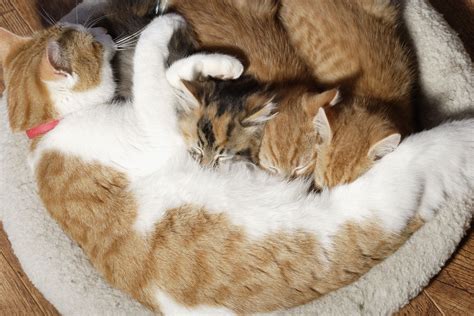Introduction
The bond between cats and their human companions has been an integral part of human society for centuries. Cats provide unconditional love, companionship, and a sense of responsibility. However, the growing popularity of cat parenting in recent years has raised questions about its potential impact on social life.

The Pros of Cat Parenting
Companionship and Emotional Support
Cats offer unparalleled companionship. Their affectionate nature, playful spirits, and calming presence can significantly reduce loneliness, anxiety, and depression. Studies have shown that cat owners have lower blood pressure, improved sleep quality, and a reduced risk of cardiovascular disease.
Responsibility and Routine
Caring for a cat instills a sense of responsibility, especially in children. Regular feeding, grooming, and playtime help establish a structured routine, which is beneficial for both cats and their owners.
Reduced Stress
Interacting with cats has been proven to lower stress levels. Studies conducted by the University of Bristol found that people who spent just 10 minutes with a cat experienced a significant decrease in cortisol, a hormone associated with stress.
The Cons of Cat Parenting
Time Commitment
Cats require a significant time commitment. They need daily feedings, grooming, and play sessions. Additionally, vet visits, emergencies, and vacations can further strain the time and resources of cat owners.
Social Isolation
While cats provide companionship, they can also lead to social isolation. Cat owners may spend less time socializing with friends and family due to their responsibilities at home.
Potential Health Risks
Cat litter boxes can be breeding grounds for bacteria and parasites. Cleaning them regularly is crucial to prevent the spread of infection. Additionally, some people with compromised immune systems may be at risk of illness from contact with cats.
Balancing Cat Parenting and Social Life
Balancing cat parenting and social life requires careful planning and compromise. Here are some tips for achieving a healthy equilibrium:
Set Boundaries
Establish clear boundaries to prevent cats from dominating social time. Designate specific areas of the home for cat activities and keep them out of social spaces during gatherings.
Prioritize Social Events
Plan social events in advance and make arrangements for cat care if necessary. Consider hiring a pet sitter or asking a friend to check in on your cat while you’re away.
Involve Others in Cat Care
Ask family members, roommates, or friends to help with cat care tasks. This can free up your time for social activities.
Seek Support
Join cat-related groups or online communities to connect with other cat owners and share experiences. This support system can provide valuable advice and emotional support.
The Future of Cat Parenting
As cat parenting continues to grow in popularity, technology is emerging to assist owners in managing their time and responsibilities. Smart feeders, automatic litter boxes, and video surveillance systems can help automate cat care tasks, freeing up time for social activities.
Conclusion
Cat parenting and social life can coexist harmoniously with careful planning and compromise. By prioritizing responsibilities, setting boundaries, and seeking support, cat owners can enjoy the benefits of companionship while maintaining a balanced lifestyle. The future holds promising advancements that will further facilitate this balance, ensuring that feline friends remain a cherished part of our lives while enriching our social experiences.
FAQs
1. How many hours per day do cats need attention?
Cats typically require 2-3 grooming sessions, 2-3 play sessions, and 1-2 feeding sessions daily.
2. What are the financial costs of cat parenting?
The average annual cost of owning a cat in the US is estimated to be $700-2,000, depending on factors such as food, vet care, and pet insurance.
3. Can cats be left alone for long periods?
Cats can typically tolerate being left alone for 12-24 hours but may become anxious or distressed if left for longer periods.
4. Are cats compatible with all family situations?
Cats can be suitable for families with young children if they are properly socialized and supervised. However, they may not be suitable for families with newborns or toddlers.
5. How can I ensure my cat gets enough exercise?
Interactive play sessions with a variety of toys and a cat tree can provide sufficient exercise for indoor cats. Regular outdoor access is ideal for cats that can roam safely.
6. What are the health benefits of owning a cat?
Studies have linked cat ownership to reduced stress, lower blood pressure, and improved sleep quality.
7. What are the potential risks of cat parenting for people with allergies?
Hypoallergenic cat breeds are available for people with mild allergies, but complete avoidance is the best way to prevent allergic reactions.
8. What are the ethical considerations of cat ownership?
Adopting a rescue cat, providing responsible veterinary care, and preventing unwanted litters are all important ethical considerations for cat parents.





















